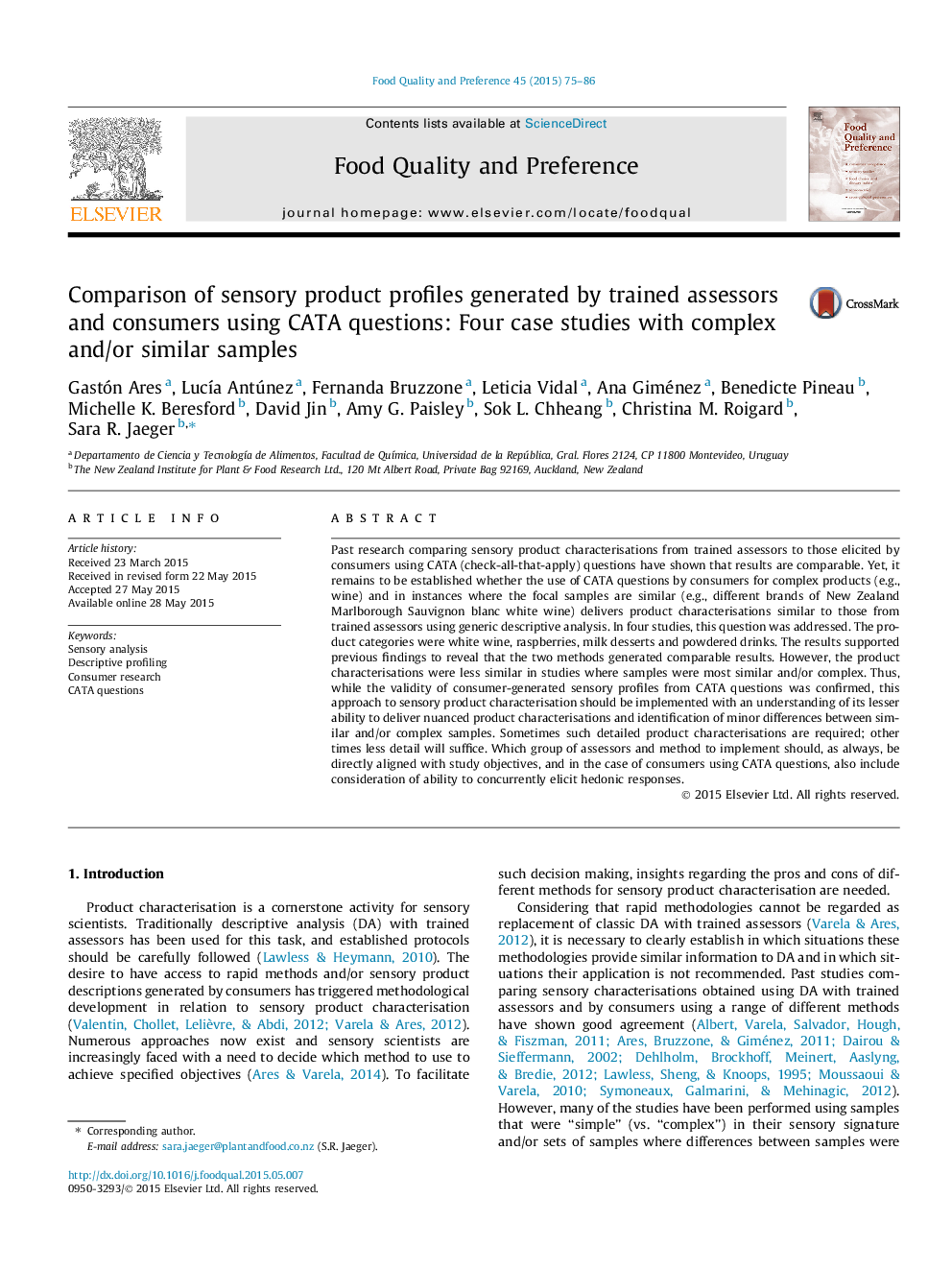| کد مقاله | کد نشریه | سال انتشار | مقاله انگلیسی | نسخه تمام متن |
|---|---|---|---|---|
| 4316925 | 1613152 | 2015 | 12 صفحه PDF | دانلود رایگان |

• The validity of consumer-generated sensory profiles from CATA questions was confirmed.
• Product configurations from descriptive analysis and CATA questions were comparable.
• Trained assessors identified more sample differences for complex and similar products.
Past research comparing sensory product characterisations from trained assessors to those elicited by consumers using CATA (check-all-that-apply) questions have shown that results are comparable. Yet, it remains to be established whether the use of CATA questions by consumers for complex products (e.g., wine) and in instances where the focal samples are similar (e.g., different brands of New Zealand Marlborough Sauvignon blanc white wine) delivers product characterisations similar to those from trained assessors using generic descriptive analysis. In four studies, this question was addressed. The product categories were white wine, raspberries, milk desserts and powdered drinks. The results supported previous findings to reveal that the two methods generated comparable results. However, the product characterisations were less similar in studies where samples were most similar and/or complex. Thus, while the validity of consumer-generated sensory profiles from CATA questions was confirmed, this approach to sensory product characterisation should be implemented with an understanding of its lesser ability to deliver nuanced product characterisations and identification of minor differences between similar and/or complex samples. Sometimes such detailed product characterisations are required; other times less detail will suffice. Which group of assessors and method to implement should, as always, be directly aligned with study objectives, and in the case of consumers using CATA questions, also include consideration of ability to concurrently elicit hedonic responses.
Journal: Food Quality and Preference - Volume 45, October 2015, Pages 75–86